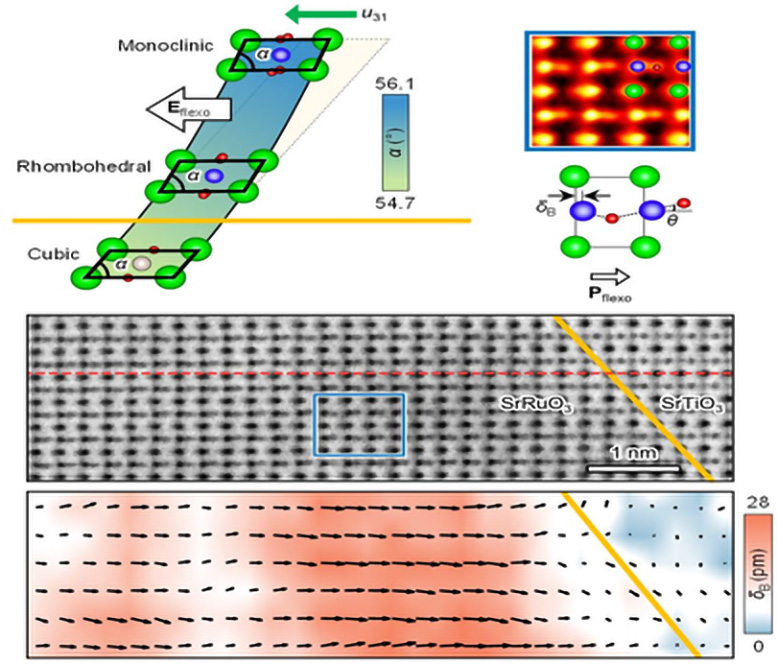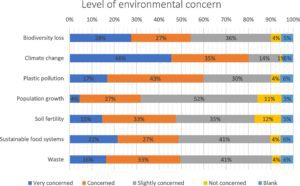

A groundbreaking study by a collaborative research team has discovered a method to induce and control polarization and polarity in metals, overcoming traditional challenges associated with metal’s free electron movement and symmetric structure. By employing flexoelectric fields on strontium ruthenate, the team achieved a transformative breakthrough in material science, promising to enhance the efficiency and longevity of electronic devices. Credit: SciTechDaily.com
In the field of materials science, the concepts of polarization and polarity are typically linked to insulators. Imagine, though, if we could introduce these properties into metals. This could reduce the power losses associated with semiconductors and enhance the longevity of batteries used in electronic devices. Up to now, despite intensive academic research aimed at inducing polarization and polarity in metals, current technologies have faced significant challenges.
Recent breakthrough by the collaborative efforts of Professor Daesu Lee from the Department of Physics at Pohang University of Science and Technology (POSTECH), Professor Tae Won Noh and Dr. Wei Peng from the Department of Physics and Astronomy at Seoul National University (SNU), and Professor Se Young Park from the Department of Physics at Soongsil University (SSU), have led to the discovery of a method to induce and control polarization and polarity states within metals.
This groundbreaking research was recently published in the journal Nature Physics.
Challenges in Inducing Polarization
Free electrons within metals, given their name, exhibit unrestricted movement, making it difficult to align them in specific directions to induce polarization or polarity states. Additionally, the symmetric structure of metal crystals at both ends has historically posed challenges in inducing these electrical effects.
However, the research team employed flexoelectric fields to implement polarization and polarity states within metals. This type of field arises when the surface of an object undergoes non-uniform deformation, allowing for the manipulation of charge movement and electrical characteristics by subtly altering the lattice structure of metals.

(Top) Schematic representation of achieving polarized metal states through a flexoelectric field
(Bottom) Atomic-scale imaging of the polarized metal SrRuO3 Credit: POSTECH
The team applied external pressure to the widely used strontium ruthenate (SrRuO3) in the field of electronic components and semiconductors, generating a flexoelectric field. This metal oxide, characterized by heteroepitaxy, where crystals of strontium and ruthenium oxide with different shapes grow in the same direction, possesses a centrosymmetric structure.
The flexoelectric field altered the electronic interactions and lattice structure within strontium ruthenate, leading to a successful induction of polarization within the metal, causing a transformation in its electrical and mechanical properties and breaking the previously central symmetric structure. By employing flexoelectric polarizing and control of a ferromagnetic metal, the research team has successfully unraveled the mystery surrounding the implementation of polarization and polarity within metallic substances.
Impact and Future Applications
The study’s lead researcher, Professor Daesu Lee from POSTECH, stressed, “We are the first researchers to verify the universal implementation of polarity states within metallic substances. I am hopeful that the findings from this study will prove beneficial in crafting highly efficient devices within the semiconductor and electrical fields.”
Reference: “Flexoelectric polarizing and control of a ferromagnetic metal” by Wei Peng, Se Young Park, Chang Jae Roh, Junsik Mun, Hwiin Ju, Jinkwon Kim, Eun Kyo Ko, Zhengguo Liang, Sungsoo Hahn, Jinfeng Zhang, Ana M. Sanchez, David Walker, Steven Hindmarsh, Liang Si, Yong Jin Jo, Yongjoo Jo, Tae Heon Kim, Changyoung Kim, Lingfei Wang, Miyoung Kim, Jong Seok Lee, Tae Won Noh and Daesu Lee, 17 January 2024, Nature Physics.
DOI: 10.1038/s41567-023-02333-8
This work was supported by the Mid-Career Researcher Program of the National Research Foundation of Korea and by the Research Center Program of the Institute for Basic Science in Korea.

